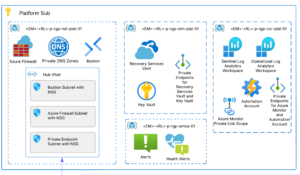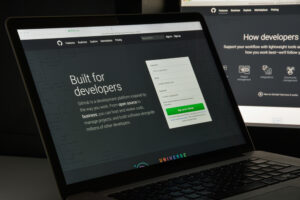This blog is a follow on about Azure Cognitive Services, Microsoft’s offering for enabling artificial intelligence (AI) applications in daily life. The offering is a collection of AI services with capabilities around speech, vision, search, language, and decision.
Azure Personalizer is one of the services in the suit of Azure Cognitive Services, a cloud-based API service that allows you to choose the best experience to show to your users by learning from their real-time behavior. Azure Personalizer is based on cutting-edge technology and research in the areas of Reinforcement Learning, it uses a machine learning model that is different from traditional supervised and unsupervised learning models.
In Azure Cognitive Services Personalizer: Part One, we discussed the core concepts and architecture of Azure Personalizer Service, Feature Engineering, its relevance, and its importance.
In Part Two, we cover a couple of use cases in which Azure Personalizer Service is implemented. We looked at features used, reward calculation, and their test run result.
In this blog, Part Three, we list out recommendations and capacities for implementing solutions using Azure Personalizer Service.
Recommendations, Current Capacities, and Limits
This section describes some essential recommendations while implementing Personalizer, and current capacity factors for its use.
Recommendations
- Personalizer starts with default learning policy which can yield moderate performance. As part of optimization, Evaluations are run that allows Personalizer to create new Learning Policies specifically optimized to a given use case. Optimized learning policies perform significantly better for each specific loop, generated during evaluation.
- The reward score calculation should consider only relevant factors with appropriate weight. Experiment duration (Rank to Reward cycle) should be low enough that the reward score can be computed while it’s still relevant. How well-ranked results worked can be computed by business logic, by measuring a related aspect of the user behavior, and it is expressed in value between -1 and 1.
- The context for the ranking items (actions) can be expressed as a dictionary of at least 5 features that you think would help make the right choice, and that doesn’t include personally identifiable information. Similarly, each item (action) should be expressed as a dictionary of at least 5 attributes or features that you think will help Personalizer make the right choice. There should be less than 50 actions (items) to rank per call.
- Personalizer will adapt to continuous change in the real world, but results won’t be optimal if there are not enough events and data to learn from to discover and settle on new patterns. Data can be retained long enough to accumulate a history of at least 100,000 interactions.
- You should choose a use case that happens often enough. Consider looking for use cases that happen at least 500 times per day. Context and actions have enough features defined to facilitate learning.
- Your data retention settings allow Personalizer to collect enough data to perform offline evaluations and policy optimization. This is typically at least 50,000 data points.
- Don’t use Personalizer where the personalized behavior isn’t something that can be discovered across all users but rather something that should be remembered for specific users or comes from a user-specific list of alternatives.
- To prevent actions from being ranked, it can either be removed from the list while making Rank API call or use Inactive Events. To disable automatic learning, call Rank API with learningEnabled = False. Learning for an inactive event is implicitly activated if you send a reward for the Rank results.
- Personalizer exploration setting of zero will negate many of the benefits of Personalizer. With this setting, Personalizer uses no user interactions to discover better user behavior. This leads to model stagnation, drift, and ultimately lower performance.
- A setting that is too high will negate the benefits of learning from user behavior. Setting it to 100% implies constant randomization, and any learned behavior from users would not influence the outcome.
- To realize the full potential of AI offerings, design and implementation should gain the full trust of end-users, aspects to consider include ethics, privacy, security, safety, inclusion, transparency, and accountability.
Capacity & Limits
- How well the ranked-choice worked need to be measured with relevant user behavior and scored between -1 and 1 with single or multiple calls to Reward API.
- Context and Actions (Items) have enough features (at least 5 features each) to facilitate learning. Fewer than 50 items (actions) to rank per single Rank call.
- Retaining the data for long enough to accumulate a history of at least 100,000 interactions to perform effective offline evaluations and policy optimizations, typically at least 50,000 data points.
- Personalizer supports features of data type string, numeric, and Boolean. Empty context is not supported, it should have at least one feature in the context.
- For categorical features, pre-defining of the possible values or ranges is not required.
- Features that are not available at the time of Rank call should be omitted instead of sent with a null value.
- There can be hundreds of features defined for a use case, but they must be evaluated (using principles of Feature Engineering and Personalizer Evaluation option) for effectiveness, and less effective ones should be removed.
- The features in the actions may or may not have a correlation with the features in the context used in Personalizer.
- If the ‘Reward Wait Time’ expires, and there has been no reward information, a default reward is applied to that event for training. The maximum wait duration supported currently is 6 days.
- Personalizer Service can return a rank very rapidly, and azure will auto-scale on need basis to maintain the rapid generation of ranking results. Throughput is calculated by adding the size of action and context JSON documents, and factor the rate of 20 MB / sec.
- Context and Actions (items) are expressed as a JSON object that is sent with the Rank API call. JSON objects can include nested JSON objects and simple property/values. Arrays can be included if the items are numbers.
Conclusion
Azure Cognitive Services suite facilitates a broad range of AI implementations. It enables applying the benefits of AI technology in little things we do in our daily lives. Personalizer service is simple to use yet powerful AI service that can be applied in any scenario where the ranking of options is meaningful once it is expressed with a rich set of features. I hope this blogpost is helpful in explaining the high potential use of Azure Cognitive Services Personalizer Service. I also wanted to thank my colleague Kesav Chenna at AIS for his contribution in implementing Personalizer in the use cases discussed in this blog.
References
- Azure Personalizer Documentation
- Responsible AI design and implementation framework in The Future Computed.






